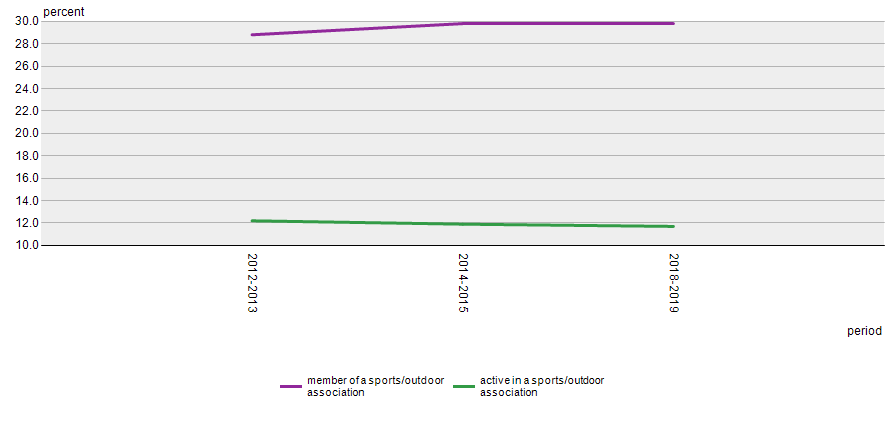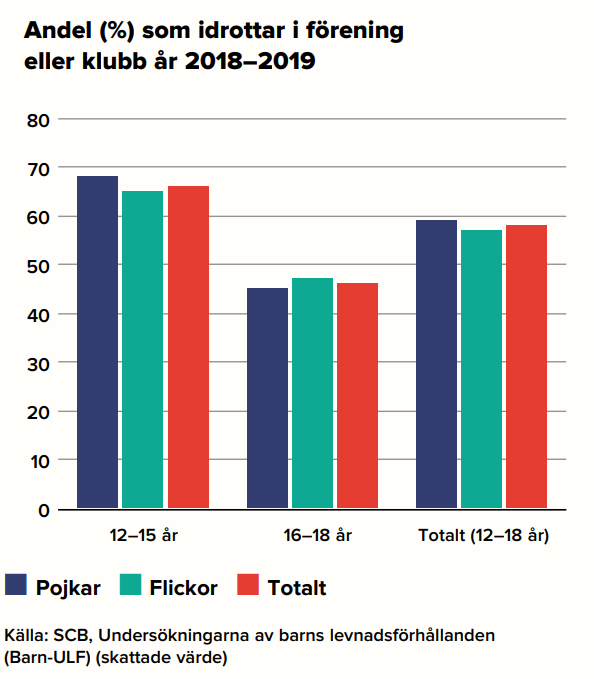I now grasped the general idea of physical activity (PA) prevalence and trends in Sweden. I then wondered how about sports. I hear several things from residents, for example, the most popular sport in Sweden is football without a doubt, gym goers are increasing, and sports should not be for competition but for joy. An interesting difference from Japan that I found was that no sports clubs are affiliated with schools in Sweden. To check those my wonderings, I investigated how sports are organized in Sweden.
The organization: Swedish Sports Confederation (Riksidrottsförbundet (RF)) is in charge of all sorts of initiatives in sports. It was formed in 1903. For now, under the strategic plan 2022-2025 (Strategy 2025), all sports associations are marching together. Strategy 2025 emphasizes equality, inclusion, and lifelong engagement in sports activities (1). For example, there are programs to help immigrants smoothly integrate into society, and programs to help elderly people to maintain social relationships through sports activities (2).
Membership in sports associations is around 30 % (Figure 1) (3). Given that around 60-70 % of people are physically active, this number could tell something. Perhaps, half of the active people exercise through sports associations, and another half exercise by themselves, such as walking, jogging, and weight training at a gym.
In the income and living condition survey (SILC) people were asked;
Q: “Are you a member of any sports or outdoor association?”
Q: “Do you participate actively in the activities of the association, such as being a coach or leader, or help organize various activities?”.

There seems to be a gradual increase in membership in sports associations from 2012 to 2019.
That is different in adolescents. In Japan, for example, 65-75 % of 12-18 years old adolescents belong to sports clubs at schools. In Sweden, around 65 % of 12-15 years old adolescents belong to sports clubs, but only around 45 % of 16-18 % of 16-18 years old adolescents belong to sports clubs (Figure 2) (4).

This is interesting to me how the percentage drops in the year of high school. In Japan, it is quite consistent until the end of the high school year. It is probably much easier for students to join clubs if they are at school. In addition, it could be just a difference in norms that in Japan, it is common for students to join clubs and compete between schools.
Even though there is a strategy for making sports more for everyone and inclusive, competition should be around as long as great football teams and Olympians compete as Swedish representatives. I will further investigate how the mindset of sports is shifting in Sweden by interviewing people who engage in sports management and policy making.
References
1. Riksdrottsförbundet. Strategi 2025 [Internet]. 2023 [cited 2023 Jul 29]. Available from: https://www.rf.se/rf-arbetar-med/strategi-2025
2. World Health Organization. Sweden Physical Activity Factsheet 2021. World Health Organization Regional Office for Europe; 2021.
3. Statistics Sweden. Statistics on Income and Living Conditions [Internet]. Statistics Sweden; 2022 Oct [cited 2023 Apr 12]. Available from: https://www.scb.se/en/finding-statistics/statistics-by-subject-area/living-conditions/living-conditions/living-conditions-surveys-ulfsilc/#_Moreinformation
4. Riksdrottsförbundet. Idrottsrörelsen i siffror [Internet]. 2023 [cited 2023 Jul 29]. Available from: https://www.rf.se/forskning-och-statistik/statistik/idrottsrorelsen-i-siffror
